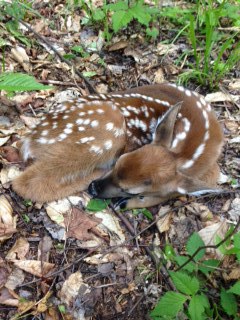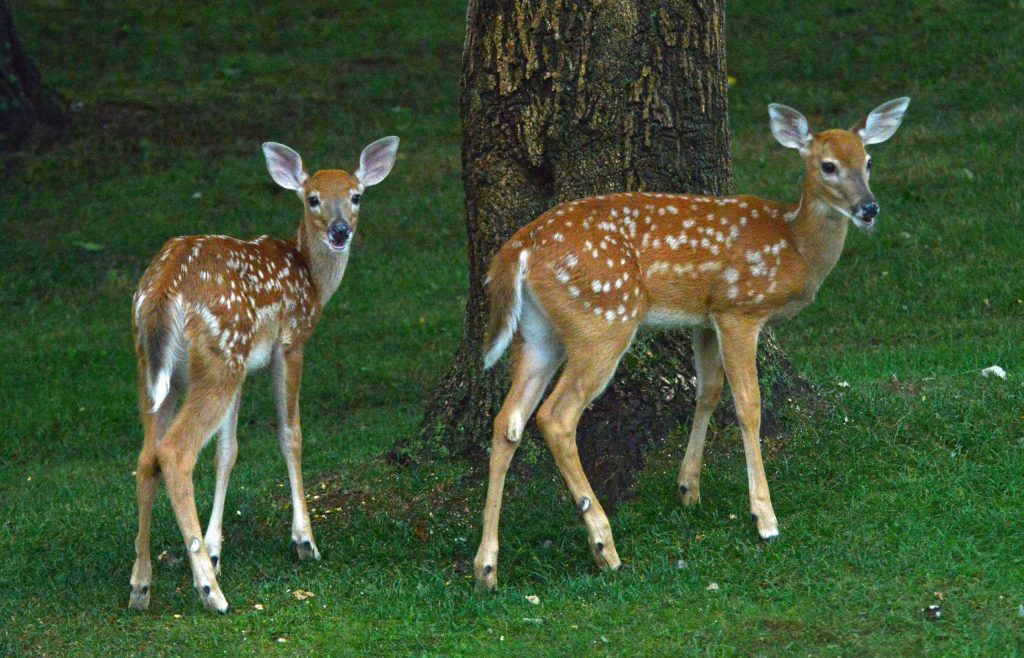Most of the research photos and reporting you see shows biologists affixing various tags and transmitters, recording data, and that ever precious moment of release.
The animal goes bounding back into the wild, no worse for wear. All are happy.
What you don’t usually see is the lead up to those moments. The frantic activity of both the animal and the biologist. And just because they are little doesn’t mean it is any easier. Even a 6-lb bundle of cuteness with legs that seem to go in every direction is a formidable adversary.
That’s what our field crews are learning right now. The peak of fawning season occurred this past weekend (May 30). We are smack in the middle of the biggest 2 weeks of fawning.
 Young fawns (less than a week old) react to danger by remaining hidden and freezing in a prone position – curled up or outstretched with their neck and chin on the ground. Perceiving danger, a fawn’s heart rate may actually drop 11-68%.
Young fawns (less than a week old) react to danger by remaining hidden and freezing in a prone position – curled up or outstretched with their neck and chin on the ground. Perceiving danger, a fawn’s heart rate may actually drop 11-68%.
But by the time they are a week old, things start to change. While they may look gangly and uncoordinated, those legs are stronger and more agile. At this age, fawns are just as likely to freeze or run when alarmed.
Some fawns are already a week old (or older!). And our field crews are experiencing the reality of this phenomenon. This past weekend crews were out on East Fork Rd. in the Susquahanock State Forest. Spying a doe they stopped. She had disappeared out of sight. Does with a fawn exhibit distinct behaviors. One, of course, is to defend her fawn when she hears it in distress.
A crew member blew the bleat call. The good mom came storming back to investigate the supposed troubled baby. She frantically checked a bush before running back up the hill just out of sight. Since the doe was kind enough to give the general location of her fawn, the crew went to investigate.
It didn’t take long to find it. As the crew neared the bush, the fawn jumped up taking off down a dry creek bed. Crew member Shawn Seeley did the same! Shawn tore through berry brier and brush ever so close to the little sprinter. After about a 25-50 yard chase the fawn dove into another bush. If it wasn’t for that, the little doe would have easily won this 50 yard dash.
JOB REQUIREMENT: Run 50 yards in rocky, uneven terrain, dodging tree, bushes and the occasional unseen stump in less than 10 seconds.
You don’t often see this as part of a job announcement! We consider it part of the “on the job” training that all our crew members learn. You don’t need to be Usain Bolt to work in the wildlife field but it doesn’t hurt to have a pair of running shoes either.
-Jeannine Fleegle, biologist
PGC Deer and Elk Section
If you would like to receive email alerts of new blog posts, subscribe here.
And Follow us on Twitter @WTDresearch
